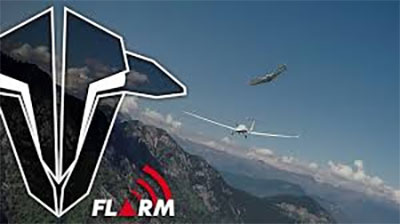Did you know that every registered aircraft in the world is assigned an ICAO (International Civil Aviation Organization) 24bit binary code that is linked to the aircraft registration?
by David Jansen
When a glider is registered, CASA send the Certificate of Registration holder a letter containing a code that looks similar to this – 011111000001111011100001
This 24bit binary code is also converted into Decimal Code, Octal Code and Hex Code.
There are various web sites around that can do the conversion for you, or you can get in touch with CASA, give them your VH-xxx registration, and they will forward you a letter with all the information. Their web address is here – https://www.casa.gov.au/aircraft/civil-aircraft-register/contact-civil-aircraft-register
What we as glider pilots are after is the Hex code beginning with the combination of 7Cxxxx.
‘7C’ is the prefix for Australia and is used to specifically identify your aircraft.
Your Flarm uses this Hex code and your Flarm code should match your aircraft registration.
From the CASA web site
"If you are using your EC device on a registered aircraft with an existing ICAO 24-bit address, you must program this address into your EC device. Contact the civil aircraft register if you don’t know the 24-bit address for your aircraft."
What is an EC (Electronic Conspicuity) device?
An EC device transmits Automatic Dependent Surveillance-Broadcast (ADS-B) information about the position of an aircraft to other airspace users operating similar equipment.
While Flarm is not technically an EC device (No ADS-B Out) it behoves us as aviators to match our Flarm IDs (Hex Code) to our VH registration numbers.
With the advent of Flarm tracking through such services as the OGN (Open Glider Network) and commercial sites like FlightRadar24, our aircraft are becoming more visible.
The OGN maintains a database of our Flarm Hex code, which you may sign up to voluntarily, and uses this data to identify you as you are tracked. If you have not signed up, you are still tracked, just not identified.
The OGN database can be accessed at this location - https://ddb.glidernet.org
We have a growing number of voluntarily maintained OGN receivers going around Australia, as well as FlightRadar24 receivers – which also receive your Flarm – so it’s time for us to start thinking about surveillance and making the numbers match. Eventually, you might see this as a Form 2 amendment in addition to confirming you have the latest Flarm software each year.
What are the advantages?
Checking your Flarm installation!
Ever heard someone ask, “Why can’t I see you on my Flarm?” Go to this web site and click on the inverted tear drop near the Kingaroy OGN receiver.
http://glidertracker.de/#lat=-26.602&lon=151.899&z=8&id=YKRY
Explore the information in the top right info box and you will see that the Ditto base station, a Flarm in itself, has a signal strength around 42.0 dB. The higher the number, the better the Flarm reception or, in other words, the better your Flarm is transmitting. With today’s modern Power Flarm and a good aerial install, it is typical to see a glider as far away as 140km from the receiver – and that is great news if someone is looking for you near last light.
As an aside to this, if your club uses DittoLog, the Ditto base stations should also have a 7C prefix. CASA will give you a code for a ground station if asked. Kingaroy is waiting for the assignment of a 7Cxxxx code at the time of writing this article.
Resolving aircraft ID
So, what happens if you do NOT have a 7Cxxxx Flarm code in your Flarm? The Flarm database in my glider sees your Hex code, which might have been registered by an ASG29 owner flying out of Poppenhausen in Germany, with a registration of D-2929. My LX9000 tells me your rego is D-2929 and you are an ASG29, when in fact you are an Astir from Lake Keepit.
If I can see your registration electronically, but I’m not close enough to visually identify you, at least I can have a go at contacting you if needed. I believe the GFA is in the process of defining a default cross country frequency, so if a glider from Narromine meets a glider from Bathurst somewhere over the plains, we can at least talk to each other in the thermal we share. Wouldn’t that be nice? (Maybe try 122.7 until that is actually written in the MOSP?)
Search and Rescue
There are websites out there that keep a record of your flight track. If for some unfortunate reason you are not home at the end of the day, where will we start to look? Have you ever just gone flying or changed your task in the air? The ground receivers are watching and can help locate you if you are in distress.
Airmanship
As the airspace becomes more congested and Air Services Australia pushes Class E airspace ever lower, we need to present a professional image to all those that might like to shut us out. Ever heard the Ed Kilbourne gliding song ‘The Last One Up’ that goes “When the FAA puts a TCA over every place that we soar, and keep out signs all are posted on our ceilings and our floors, when the privilege to fly the ridge, comes from Washington DC..” You get where we are going here.
If we can keep our operation as professional as possible, we keep a voice that matters in the big picture.
Go for it….and stay safe for yourself and those around you.
Further reading
https://ktrax.kisstech.ch/devices
https://www.gliderradar.com/center/-27.15325,151.76239/zoom/9/time/15
https://glideandseek.com/?viewport=-26.90615,151.26389,9
https://www.flightradar24.com/-26.47,138.50/5#































